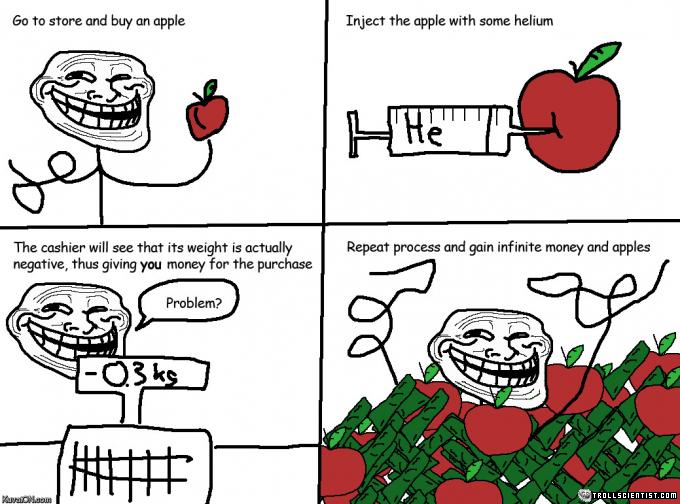HST_Rihad
Active Member
Yup, just like all of us HSTers areAre you sure you're not just a contrarian?
Yup, just like all of us HSTers areAre you sure you're not just a contrarian?
Are you sure you're not just a contrarian?
Using the HST calculator I quickly found out that 85% load is 6RM. 5RM occurs no sooner than at 88%. So shouldn't we assume HST's lower rep range to be 6RM to match newer research? It's a bit less stressful or risky for joints and tendons, injury potential is a bit lower, and optimal "per bout" rep count can be achieved with a bit less time & effort.In general, the rate of hypertrophy in these studies was greatest when the loads were 65%–85% of an athlete’s one-repetition maximum (1RM). It is of interest that you don’t see a linear dose-response by increasing the weight from 65%–85%.

This article by Bryan Haycock based on Wernbom's work got me thinking. It says:
Using the HST calculator I quickly found out that 85% load is 6RM. 5RM occurs no sooner than at 88%. So shouldn't we assume HST's lower rep range to be 6RM to match newer research? It's a bit less stressful or risky for joints and tendons, injury potential is a bit lower, and optimal "per bout" rep count can be achieved with a bit less time & effort.In general, the rate of hypertrophy in these studies was greatest when the loads were 65%–85% of an athlete’s one-repetition maximum (1RM). It is of interest that you don’t see a linear dose-response by increasing the weight from 65%–85%.
Well, that might be because Wernbom's study covering optimal rep ranges is dated 2007, Bryan based his stuff on earlier research.Heck! 85% of your 1RM load is exactly your 6RM! Of course! Why didn't anyone suggest this sooner?
Working toward your 6RM instead of your 5RM will change everything: not only will you make the same gains but you'll be able to lift so much more safely.
Ah, but wait just a darn minute! The downside will be that, should you ever try for a 1RM, your whole body will immediately melt. It will serve you right, too, for being stupid enough to try such an outrageously dangerous thing.
Ok, sorry... but you asked for that.
Well, that might be because Wernbom's study covering optimal rep ranges is dated 2007, Bryan based his stuff on earlier research.
I see where you're coming from: due to specificity principle you won't necessarily be able to lift your calculated 1RM after having trained 6RM 85%. I just don't see how being able to lift my 1RM is going to help me build muscleIt might be clearer to think this way: weight you can lift 6RM @RPE 9-10 is most probably within your 85-87%.
Anyway, what I'm saying is 6RM is closer to that "good" range. If you consider that trying new weights inevitably drops my reps even lower. it's even more so.
This article by Bryan Haycock based on Wernbom's work got me thinking. It says:
Using the HST calculator I quickly found out that 85% load is 6RM. 5RM occurs no sooner than at 88%. So shouldn't we assume HST's lower rep range to be 6RM to match newer research? It's a bit less stressful or risky for joints and tendons, injury potential is a bit lower, and optimal "per bout" rep count can be achieved with a bit less time & effort.
View attachment 2171

Light Weights Are Just as Good for Building Muscle, Getting Stronger, Researchers Find
Apr. 30, 2012 — Lifting less weight more times is just as effective at building muscle as training with heavy weights, a finding by McMaster researchers that turns conventional wisdom on its head.
The key to muscle gain, say the researchers, is working to the point of fatigue.
"We found that loads that were quite heavy and comparatively light were equally effective at inducing muscle growth and promoting strength," says Cam Mitchell, one of the lead authors of the study and a PhD candidate in the Department of Kinesiology.
The research, published in the Journal of Applied Physiology, challenges the widely accepted dogma that training with heavy weights -- which can be lifted only six to 12 times before fatigue -- is the best avenue to muscle growth.
"Many older adults can have joint problems which would prevent them training with heavy loads," says Mitchell. "This study shows that they have the option of training with lighter and less intimidating loads and can still receive the benefits."
For the study, a series of experiments were conducted on healthy, young male volunteers to measure how their leg muscles reacted to different forms of resistance training over a period of 10 weeks.
The researchers first determined the maximum weight each subject could lift one time in a knee extension. Each subject was assigned to a different training program for each leg.
In all, three different programs were used in combinations that required the volunteers to complete sets of as many repetitions as possible with their assigned loads -- typically eight to 12 times per set at the heaviest weights and 25-30 times at the lowest weights.
The three programs used in the combinations were:
After 10 weeks of training, three times per week, the heavy and light groups that lifted three sets saw significant gains in muscle volume -- as measured by MRI -- with no difference among the groups. Still, the group that used heavier weights for three sets developed a bit more strength.
- one set at 80% of the maximum load
- three sets at 80% of the maximum
- three sets at 30% of the maximum
The group that trained for a single set showed approximately half the increase in muscle size seen in both the heavy and light groups.
"The complexity of current resistance training guidelines may deter some people from resistance training and therefore from receiving the associated health benefits," says Stuart Phillips, a professor in the Department of Kinesiology and supervisor of the study. "Our study provides evidence for a simpler paradigm, where a much broader range of loads including quite light loads can induce muscle growth, provided it is lifted to the point where it is difficult to maintain good form."
